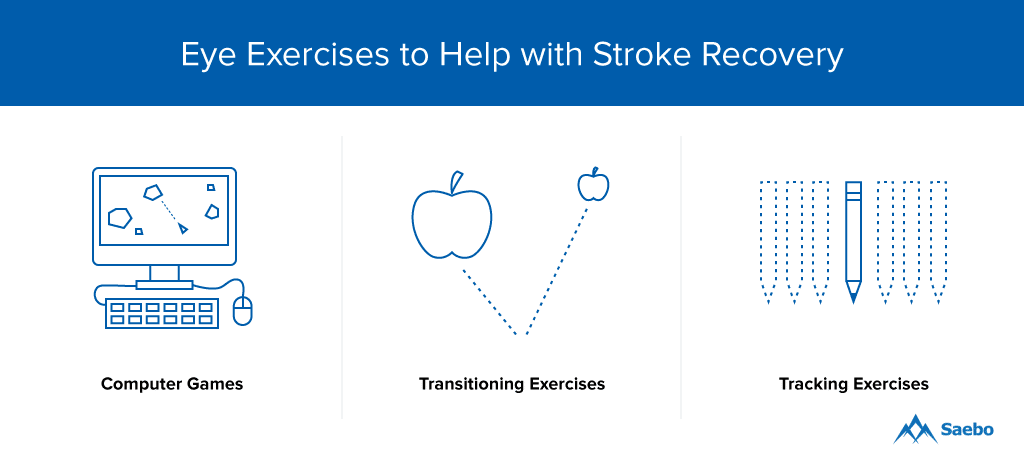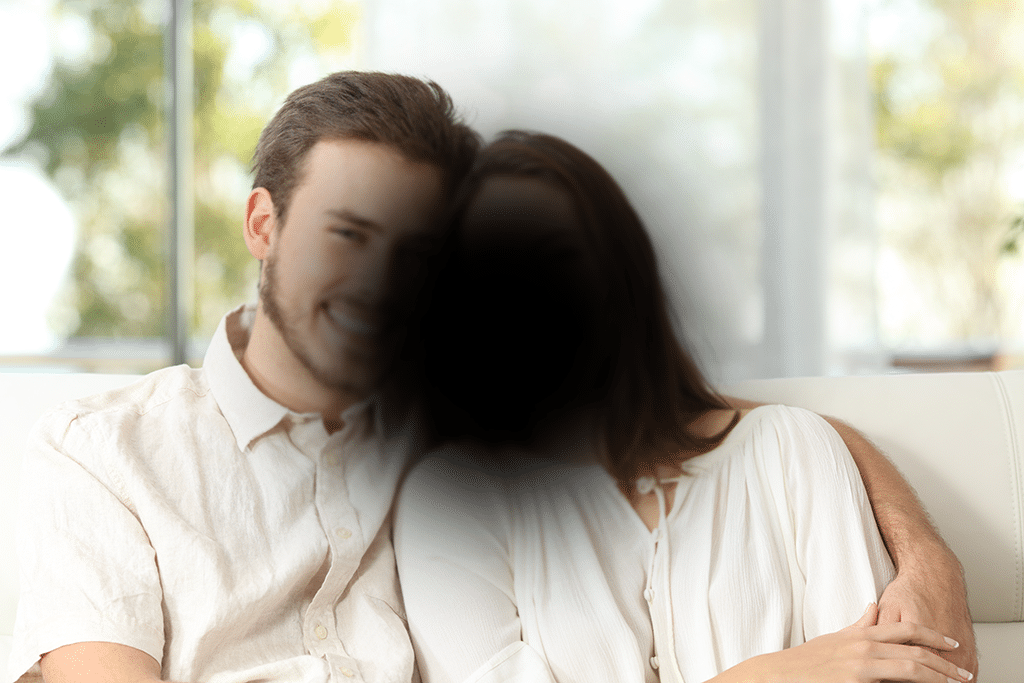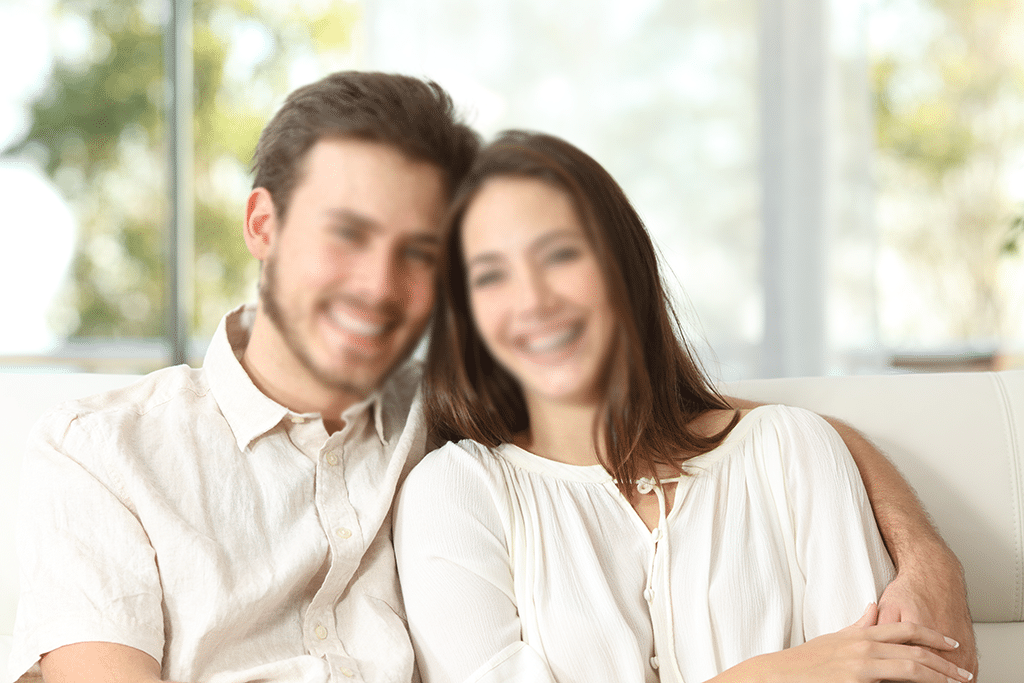Vision Problems After Stroke: Understanding & Overcoming Them


People often think of a stroke as having a profound effect on a victim's motor functions—and it does. However, did you know that as many as two-thirds of stroke victims experience vision impairments as a result of a stroke? Not all visual impairments happen immediately after the stroke, but some victims will notice changes to their vision right away. Fortunately, like motor function, eye injuries can also improve following a stroke. With the help of specific eye-training exercises, you can rewire your brain to help improve your eye functions. If you believe your eyesight has been affected by a stroke, it's important to learn as much as you can about overcoming these resulting eye injuries. Like other stroke-rehabilitation methods, beginning eye exercises as soon as possible after stroke will give you a better chance of recovering or improving your sight.
Eye Exercises to Help with Stroke Recovery
Eye exercises are an important part of rehabilitation for stroke patients with visual impairments. They help strengthen the eye muscles for improved control to aid recovery from eye injuries after stroke. Here are a few eye exercises you can do at home:
- Computer games. Download word search games to aid in your visual perception. You can download word search games for free from several websites. Eye Can Learn and Lumosity also offer free games that can improve your visual-tracking skills.
- Transitioning exercises. Focus on an object close to you, and then look to an object farther away. Try to increase your speed looking between the two objects until you can go back and forth rapidly.
- Tracking exercises. Have someone else hold a pencil in front of your face, about 18 inches from your eyes. Have the person move the pencil slowly, up and down and side to side, as you track it with your eyes. Remember to keep your head still and move only your eyes.

Eye Injuries After Stroke
There are four main types of eye problems that can occur after stroke. These include central vision loss, visual field loss, eye movement problems, and visual processing problems. Each type of eye issue warrants a different treatment, since each affects the brain in different ways.
Central Vision Loss

Central vision loss can affect one or both of your eyes. However, when central vision loss happens as the result of a stroke in the brain, it typically impacts both eyes. It causes full or partial vision loss and can make it difficult to see anything in the center of your vision. Instead, you may see things with your side vision or nothing at all, depending on how significantly your eyes have been affected. You could also suffer from central vision loss if you had a retinal stroke. This type of stroke affects the eye rather than the brain and is caused by an eye blood vessel blockage. A retinal stroke usually affects just one eye, and you may have noticed vision problems, like blurriness or blackouts, in that eye before your stroke.
Visual Field Loss

In contrast to central vision field loss, visual field loss affects your ability to see objects to the left or right of your central line of sight. Where the stroke happened in your brain directly affects where you'll experience loss of sight or impairments in your field of vision. The most common scenario for stroke victims is a stroke toward the back of the brain, which makes you unable to see from half of each eye. Other impairments may include blank patches in your vision, the loss of upper or lower field of vision in one or both eyes, or a quarter of your field of vision lost in one or both eyes.
Eye Movement Problems

Eye movement problems after stroke are a result of damage to the nerves that control your eyes. You may notice impaired eye movements, like the inability to follow objects with your eyes or look from object to object. You could also struggle to move your eyes up and down, or one eye may move when the other doesn't. Additionally, you may notice that you have lost control of your eye movements. Your eyes may twitch or constantly move, causing blurriness and dizziness. You may also find that you are no longer able to judge how far objects are from you due to impaired depth perception.
Visual Processing Problems

After a stroke, you may have difficulty with visual processing, or your ability to make sense of what you see. The most common visual processing problem after stroke is visual neglect, which can affect your perception of things around you; for example, you may have trouble distinguishing faces or colors from each other. You may also not be aware of things in your right or left visual space. Some individuals may not be aware of one entire side of their body. Some people have visual hallucinations after stroke, which are also classified as a visual processing impairment. You may begin seeing things in your vision that aren't really there, and this can be incredibly stressful.
Overcoming Eye Injuries After Stroke
Fortunately, you can recover from eye injuries after stroke, although the process may take a while. Some stroke victims do notice improvement in their eyesight and eye functions long term after a stroke. Others have eye problems that do not improve, but rehabilitation focusing on the eyes can help patients adapt to their new eyesight. If a patient experiences eye problems following a stroke, he or she will undergo visual field testing to determine the part of vision affected by the stroke. This will help a medical team create a plan to improve the eyesight, if possible, or to help the patient adapt to his or her changes in vision. Treatment for injury to the visual field involves therapies in any combination of these three categories:
- Optical therapy. This therapy uses mirrors and prisms to help position images in a way that the patient will be able to see them in his or her line of sight. Prisms can also help correct double vision, depth perception, and other visual impairments from stroke.
- Eye movement therapy. Therapies focusing on eye movement help train a patient's eyes to move within his or her new visual scope, therefore making it easier for the patient to read and scan objects within his or her visual field. This type of therapy can also help strengthen and train the eye muscles for increased eye movement control.
- Visual restoration therapy (VRT). VRT uses lights to stimulate blind spots in a patient's visual field. Blinking or moving lights can help spark the neurons in the brain that were damaged by a stroke.

In some cases, eye surgery may be the best option to treat double vision. Some patients can also benefit from wearing an eye patch temporarily or permanently if other treatments have been unsuccessful in treating double vision and other visual impairments.
Recovering and Adapting
Although you may never fully regain your eyesight if you've suffered visual impairments after a stroke, it is possible to improve muscle control and vision. Specific therapies can also help you adapt to your new eyesight by retraining your brain and eye muscles to make the most of your vision. Optical, eye movement, and visual restoration therapies are the three types you'll likely encounter during rehab after your stroke. They can help you regain eye movement control while training your brain to help you see as well as possible, despite your impairments. At home, you can focus on gaining more control of your eye muscles and movements by practicing eye exercises. Learn new techniques to focus your eyes in different ways to allow for the widest range of vision possible.
All content provided on this blog is for informational purposes only and is not intended to be a substitute for professional medical advice, diagnosis, or treatment. Always seek the advice of your physician or other qualified health provider with any questions you may have regarding a medical condition. If you think you may have a medical emergency, call your doctor or 911 immediately. Reliance on any information provided by the Saebo website is solely at your own risk.
All content provided on this blog is for informational purposes only and is not intended to be a substitute for professional medical advice, diagnosis, or treatment. Always seek the advice of your physician or other qualified health providers with any questions you may have regarding a medical condition. If you think you may have a medical emergency, call your doctor or 911 immediately. Reliance on any information provided by the Saebo website is solely at your own risk.



